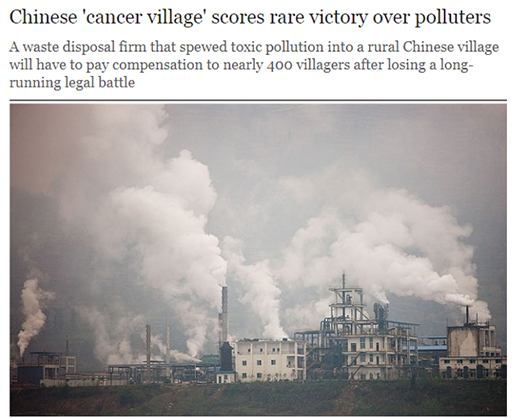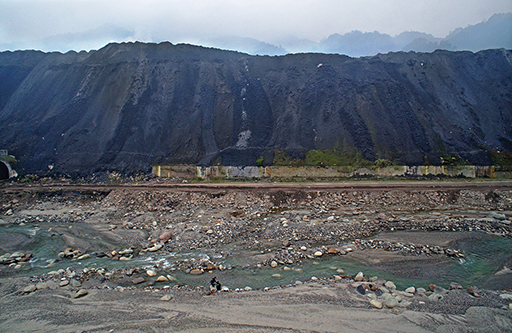1 Waste in China
From their changing diet to owning more household objects, the Chinese are becoming great consumers. Production of consumer goods needs resources such as raw materials, energy, water, land and labour as inputs, to maintain production and sustain output. Manufacturing also produces many waste products, a large number of which, if not treated carefully, and emitted to the environment, are pollutants and may be hazardous to the local population.
An extreme example of the harm that can be done by the lax control of wastes is shown through China’s environment ministry’s acknowledgement of the existence of ‘cancer villages’, as shown in Figure 1.
A cancer village is one where the incidence of cases of cancer is higher than would be expected from the incidence in the general population. This may indicate that there is a hazard that villagers are exposed to. In the village of Liuchong in central China’s Hubei province, villagers have reported deaths from cancer and are concerned about phosphogypsum dumped in the area by a local company, shown in Figure 2. Phosphogypsum is a by-product of making fertiliser and it contains cancer-causing chemicals such as arsenic, uranium and radium.
Despite much publicity for their plight, the residents of Liuchong don’t seem to have had much official response from the provincial government and the environmental protection bureau or the factory concerned. Data collection on cancer rates in China have improved over recent years (Chen et al., 2016) and show that lung cancer is the most common cancer causing death. However, a considerable amount of evidence needs to be gathered before some hazardous chemical in the environment can be shown unequivocally to be the cause of increased cancers.
Activity 1 Pathways for hazardous chemicals
- a. How might the toxic chemicals in the Liuchong dump get into the bodies of villagers?
- b. What other evidence might need to be gathered before the link between phosphogypsum and cancer is clearly established?
Discussion
- a. There could be a variety of pathways by which materials in the dump could get into the bodies of local inhabitants:
- Materials could be blown in the air and be inhaled or get onto skin. Similarly, material could be blown into soils and be taken up by fruit and vegetables that are produced and eaten locally.
- Materials could dissolve in rainwater and drain or leach out of the dump, into local watercourses and groundwater. If these sources are part of the drinking water system, then villagers could drink contaminated water. If they are used for irrigation, then crops could be contaminated.
- b. The phosphogypsum waste would have to be analysed to determine the separate components in the mixture. Each of these components would have to undergo laboratory tests to determine whether they are taken up by animal tissues and what effect they have in these tissues and cells. These kinds of tests may use laboratory animals such as mice to simulate effects in humans or, where possible, computer modelling or other studies.


